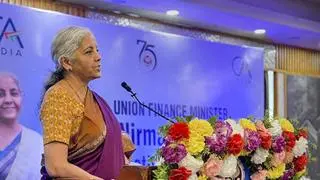The third Faster Adaption of Manufacturing of Electric Vehicles (FAME-III) scheme is unlikely to extend benefits to hybrid vehicles, sources said. This is because of the prevailing thinking in the government that continuation of purely electric vehicles (EVs) as opposed to promoting hybrids is more workable even though Road and Transport Minister Nitin Gadkari has been pushing for incentives on hybrid vehicles.
A Cabinet note to this effect is ready and is likely to be circulated once the new government has been formed. “The Cabinet note is ready, we can present it once the new government is in place (after the Lok Sabha election results come out on June 4). We don’t know the quantum of funds that could be allocated for the scheme; it all depends on the Finance Ministry... we cannot guess or estimate how much the Finance Ministry decides from their final viewpoint,” a senior official told businessline.
Charging infra
The official added that the focus will be on charging infrastructure for EVs in the phase-III of the FAME scheme. The government wants to address the concerns and anxieties around charging infrastructure among the EV buyers, the official explained.
This approach is not in sync with Gadkari’s strong pitch for hybrids. Gadkari has made a push for cutting GST on ethanol-powered cars, pitching 2-3 per cent lower tax than gasoline-powered vehicles for flex fuel cars, and 13-14 per cent lower tax for flex fuel hybrids to compensate for their higher manufacturing costs. For a flex fuel hybrid with ex-factory price of ₹9 lakh, this can bring down the price by ₹2.80 lakh, similar to a petrol-run vehicle, Gadkari’s has argued. Currently, hybrid cars attract GST of 28 per cent. Gadkari had written a letter to Finance Minister Nirmala Sitharaman last year in which he argued that flex fuel hybrids that use 100 per cent ethanol as fuel pollute even less than battery EVs.
Not many manufacturers
Government sources, however, said that there are not too many passenger vehicles manufacturers who make hybrid vehicles in the mass segment (except a few Japanese companies) and in the luxury car segment, most are imported. There are different policies for those vehicles already, like the production linked incentive (PLI) which was launched in 2021 with a budgetary outlay of ₹25,938 crore for a period of five years (FY2022-23 to FY2026-27), to boost manufacturing of advanced automotive technology (AAT) products and other components.
Sources told businessline that there are not many hydrogen fuel cell or biofuel (kind of hybrids) use cases in India yet, apart from availability of the fuel, so including them in FAME-III may not help. On the other hand, leading manufacturers such as Maruti Suzuki India, Toyota and Hyundai Motor have been lobbying for tax cuts on hybrid vehicles.
FAME-I was launched in 2015 with a total fund allocation of ₹795 crore for a period of two years, commencing from April 2015, which was subsequently extended from time to time and the last extension was allowed up to March 2019 with additional outlay of ₹100 crore. Later, the government notified FAME-II for a period of three years commencing from April 1, 2019 with a total budgetary support of ₹10,000 crore, which was further extended for another two years till March 31, 2024.
Again, through a Gazette notification on March this year, government notified another scheme – Electric Mobility Promotion Scheme (EMPS) 2024 with a budget outlay of ₹500 crore — but scheme is limited to only electric two/three-wheelers.







Comments
Comments have to be in English, and in full sentences. They cannot be abusive or personal. Please abide by our community guidelines for posting your comments.
We have migrated to a new commenting platform. If you are already a registered user of TheHindu Businessline and logged in, you may continue to engage with our articles. If you do not have an account please register and login to post comments. Users can access their older comments by logging into their accounts on Vuukle.